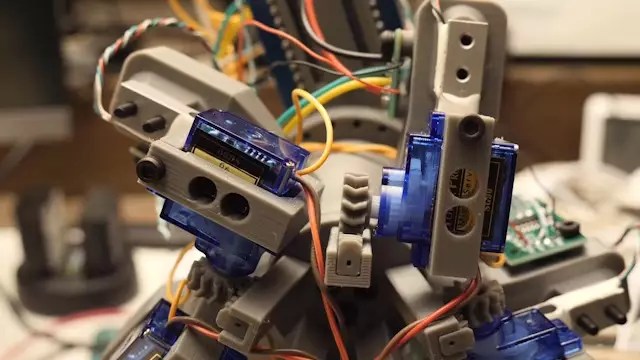In a world increasingly dominated by automation and technological innovation, the concept of robotic lock pickers captures the imagination of engineers and enthusiasts alike. The idea of creating machines that harness the principles of physics to bypass traditional security measures embodies the convergence of mechanical ingenuity and cutting-edge programming. Such robots aren’t just tools—they symbolize the future of hacking and security testing, pushing the boundaries of what machines can achieve when they emulate human ingenuity. The allure lies in their potential to perform complex, delicate tasks—like manipulating tiny lock components—with a precision and consistency that can surpass human capabilities.
However, translating this audacious vision into reality proves far more complex than most initially assume. While the concept excites hobbyists and professionals, the technical hurdles are daunting, revealing the intricacies beneath the seemingly simple act of lock picking. The journey from inspiration to functional robotic system is riddled with iterative failures, persistent challenges, and the relentless pursuit of perfection—reflecting a broader truth about innovation: it is rarely linear or swift.
The Technical Challenges of Physics-Based Lock Picking
The core idea behind physics-driven robotic lockpickers involves sensing minute resistances and reacting naturally—an elegant solution compared to brute-force approaches. Referencing projects like Sparks and Code, a YouTube channel exploring such innovations, illuminates both the promise and the hurdles ahead. Their attempt to craft a robot that gauges the tension within lock springs illustrates a sophisticated application of physics—an endeavor to emulate the tactile feedback a seasoned lockpicker would rely on.
This approach contrasts starkly with earlier methods, which focused primarily on brute force or pre-programmed sequences. By sensing the resistance in real-time, a robot could theoretically apply just enough pressure to manipulate pins without risking damage or prolonging the process excessively. Essentially, this channels the robot’s physical and sensory capabilities into a form of mechanical intuition—an attribute traditionally considered uniquely human.
Yet, the implementation reveals the extraordinary complexity of real-world physics. Locks are designed to resist exactly this type of interference, and the resistance signals are often subtle and inconsistent. Factors such as lock quality, wear, and the physical properties of the picks themselves influence outcomes in unpredictable ways. Developers have faced insurmountable obstacles trying to fine-tune sensors and algorithms to interpret these signals accurately. The result is a sobering reminder that sometimes, even the most elegant ideas are hindered by the messy realities of physics and material science.
The Human Element and the Future Prospects
Despite setbacks, the enthusiasm behind creating robotic lockpickers remains contagious. Projects like those from Sparks and Code exemplify a relentless drive to push technological boundaries, even if the current results are imperfect. They teeter on the edge of science fiction—robots that can decrypt physical security systems as effortlessly as a human expert. It’s a vision that fuels imagination, especially within cyberpunk narratives where technology and rebellion intertwine seamlessly.
Nevertheless, these attempts underscore an essential truth: innovation is a process of persistent refinement. The road from concept to reliable machine is often littered with prototypes that work only under limited conditions, or not at all. Patience and perseverance are critical, as is the willingness to accept setbacks as part of the journey. The pursuit of a physics-based lockpicking robot exemplifies a broader philosophical debate about automation’s role in security, hacking, and even ethical considerations—challenging us to think about the boundaries of machine intelligence.
While the reality of creating a fully operational, physics-aware lockpicking robot remains elusive, the efforts themselves are incredibly inspiring. They challenge traditional notions of security and manual expertise, hinting at a future where machines may coexist with human skill in unpredictable, fascinating ways. Driven by curiosity and powered by science, these projects serve as a reminder that true innovation often emerges from the collision of audacious dreams and resolute persistence—an unstoppable force shaping the next era of technological mastery.


Leave a Reply